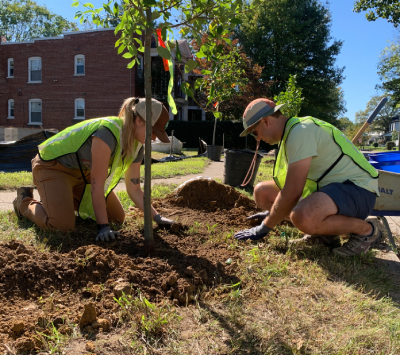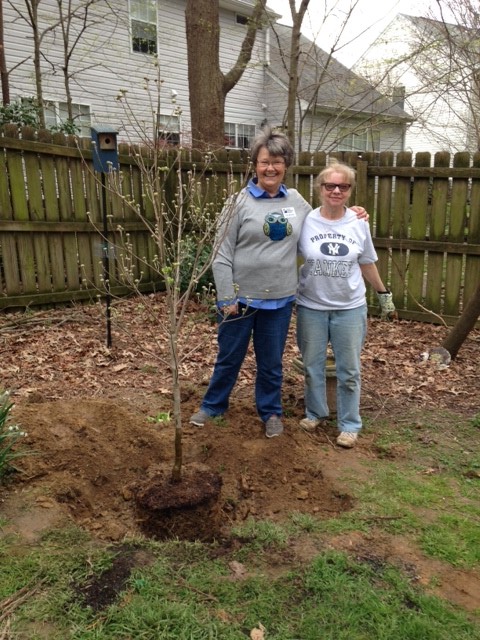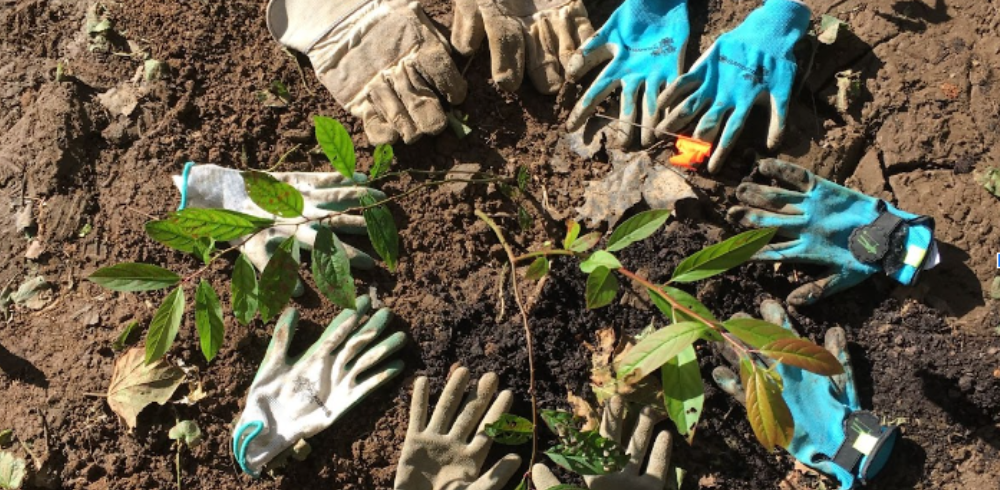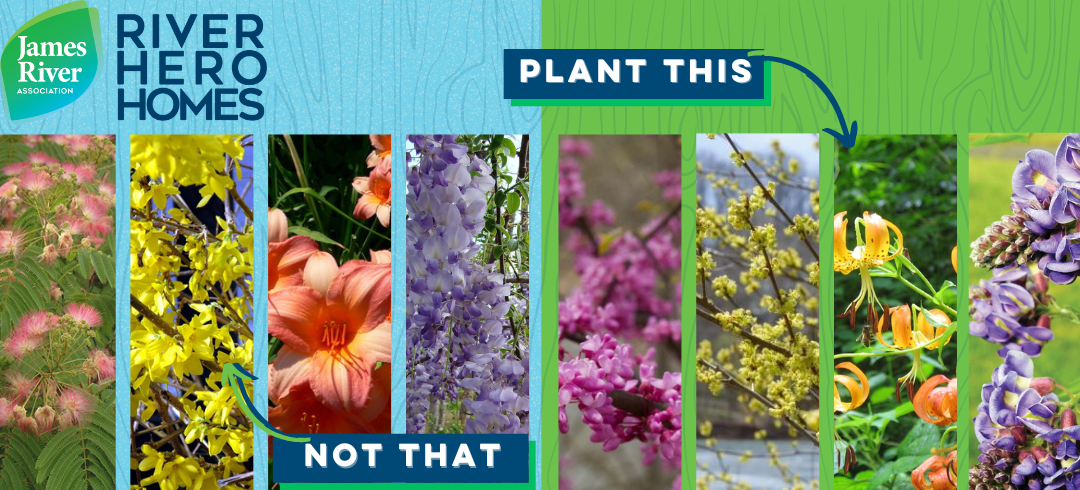The James River Association is currently recruiting volunteers for a Community Planting Event on Thursday, April 17 at the Lower James River Education Center in Williamsburg. Volunteers will assist in installing conservation landscaping around the river center that will help reduce stormwater runoff and create a welcoming habitat for wildlife. The plants installed will also create wonderful learning opportunities for the 4th-12th grade students who visit the Lower James River Center.
Two volunteer shifts are being offered from 9am-12pm and 1-4pm. To sign up for one (or both!) of these shifts, please click below.

What is Conservation Landscaping?

Conservation landscaping involves replacing turf grass, bare areas, or areas with non-native or invasive plant species with regionally native plants.
Incorporating regionally native plant species into a conservation landscaping project helps to better support local wildlife by creating habitat for species that co-evolved with these plants – promoting biodiversity and a healthy ecosystem. Regionally native plant species also have deeper root systems when compared to turf grass, making them more effective at absorbing stormwater and reducing stormwater runoff.
Lastly, conservation landscaping helps conserve resources. This approach to landscaping requires less watering over time, reduces costs around mowing, and eliminates the need for pesticides.
Interested in Incorporating Conservation Landscaping at Home?
Conservation landscaping is a river-friendly conservation practice seemingly growing in popularity across Virginia. By implementing a conservation landscaping project in your yard, you can reduce the amount of stormwater runoff leaving your yard and create habitat for wildlife. Helpful tips for planning and implementing a conservation landscaping project are below for your reference.
- Remove invasive plant species. Invasive plant species can outcompete native plant species. If invasive plant species are present in your yard, remove them. Some common invasive species in Virginia include Chinese privet (Ligustrum sinense), English ivy (Hedera helix), Japanese honeysuckle (Lonicera japonica), and tree of heaven (Ailanthus altissima).
- Test your soil. When cultivating a new area of your yard, consider testing your soil. A soil test will determine which nutrients exist in your yard and provide you with an idea of your soil’s health. Contact your local Virginia Cooperative Extension agent for details.
- Start small and expand over time. Conservation landscaping projects are a long-term commitment as they require maintenance. Start your conservation landscaping project by converting a small area of your yard from turf grass to regionally native plants and expand from there as you have capacity to maintain more area.
- Identify a variety of regionally native plants. Selecting a diverse palette of regionally native plants is one of the most fun and important aspects of conservation landscaping. Regionally native plants are adapted to thrive in the region of the world in which they evolved. Be certain to select plant species that will thrive in the unique conditions of your yard. Visit Plant Virginia Natives for regional plant guides.
- Consider the Virginia Conservation Assistance Program (VCAP). Did you know the Virginia Conservation Assistance Program provides financial incentives to property owners that install eligible best management practices including conservation landscaping in their yards? Contact your local soil and water conservation district for information about VCAP.
- Consult a professional if necessary. While planning a conservation landscaping project doesn’t require professional consultation, it may be helpful to work with a landscape architect to plan your project.
- Enjoy the fruits of your labor. As the old saying goes, “If you build it, they will come.” If you plant a milkweed species such as Butterfly weed (Asclepias tuberosa), Common milkweed (Asclepias syriaca), or Swamp milkweed (Asclepias incarnata) in your yard, chances are a female Monarch butterfly (Danaus plexippus) will find it and lay eggs on it. Have fun documenting the wildlife that visit your yard as you implement your conservation landscaping project.


